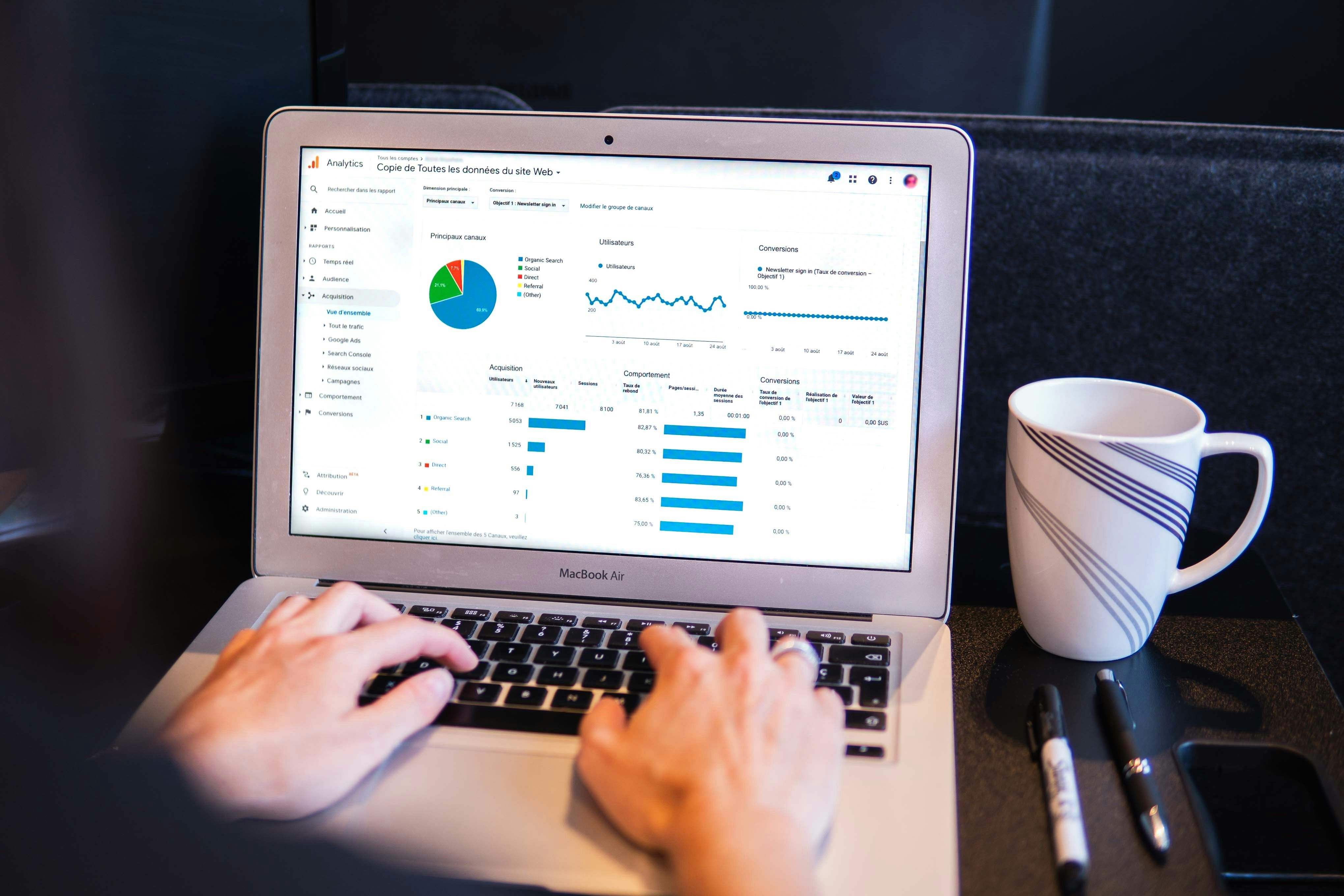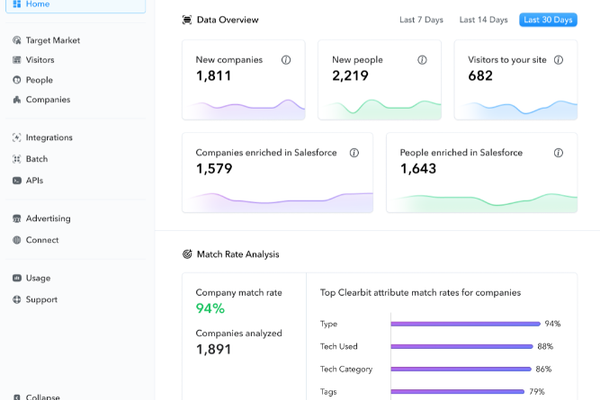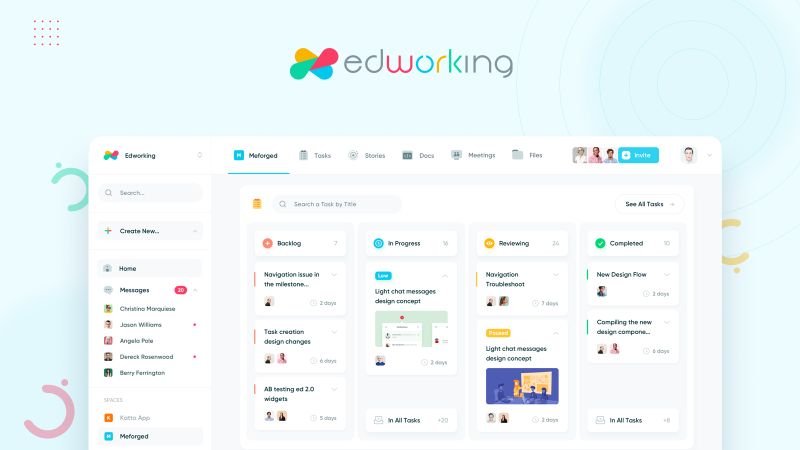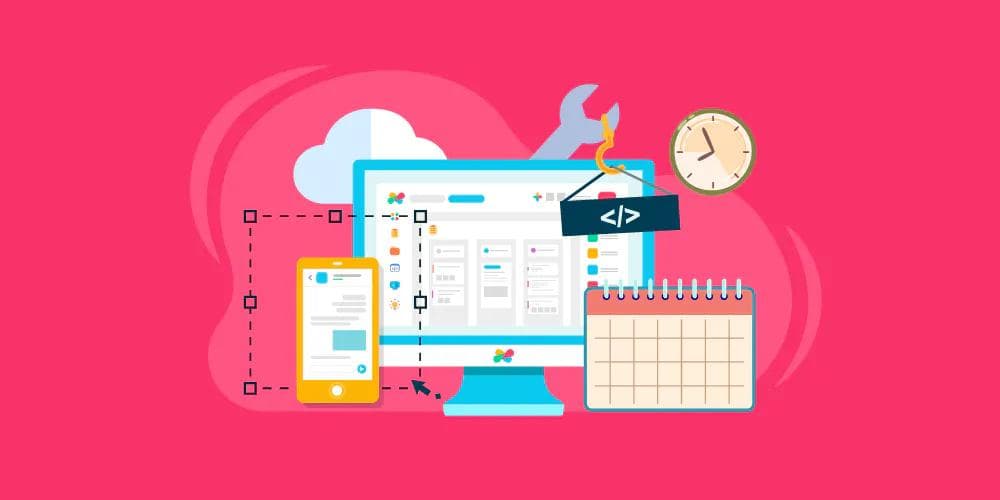In the digital age, data is often likened to oil for its immense value in driving innovation, strategy, and competitive advantage. Just as oil must be refined to fuel a car, data too must be processed and enriched to unlock its full potential. Every click, every swipe, and every interaction in the digital realm generates data, painting a detailed picture of consumer behavior, market trends, and operational efficiencies. However, raw data, with its inconsistencies and gaps, often falls short of providing actionable insights. This is where data enrichment steps into the spotlight.
Data enrichment is a powerful process that enhances, refines, and improves raw data, making it more valuable and actionable for businesses. It involves augmenting existing information with additional data sourced from internal and external databases, thereby adding depth and context. Imagine having a basic customer profile that includes names and contact details. Through data enrichment, this profile can be expanded to include preferences, purchase history, and social media activities, transforming a shallow database into a rich, multidimensional asset that can drive personalized marketing strategies, product development, and customer engagement.

This process not only enhances the quality of the data but also unlocks new opportunities for businesses to connect with their customers in meaningful ways, streamline operations, and make informed strategic decisions. As we dive deeper into the nuances of data enrichment, its types, importance, and best practices, we'll uncover how this crucial process can be a game-changer in leveraging data to its fullest potential in the digital landscape.
 The Importance of Data Enrichment
The Importance of Data Enrichment
The digital transformation has ushered in an era where data-driven decisions are not just an advantage but a necessity. Data enrichment plays a pivotal role in this landscape, transforming the way organizations operate, engage with customers, and make critical business decisions. Below, we delve into the core benefits of data enrichment, underscoring its significance in today’s data-centric world.
Enhancing Decision Making
One of the most compelling advantages of data enrichment is its ability to enhance decision-making processes. In a world inundated with information, making sense of raw data can be daunting. Enriched data, however, provides clarity and insights that were previously obscured. For instance, a retailer might use data enrichment to combine sales data with weather patterns, identifying trends that help predict future stock needs more accurately. This enriched information enables businesses to make strategic decisions based on comprehensive, nuanced data rather than hunches or incomplete information. By leveraging enriched data, companies can identify opportunities for growth, mitigate risks more effectively, and tailor strategies to meet market demands with precision.
Improving Customer Experience
In the realm of customer engagement, personalization is king. Data enrichment is the behind-the-scenes architect, enabling businesses to craft personalized experiences that resonate with their customers. By enriching customer data with additional details such as purchasing behaviors, preferences, and social media interactions, companies can tailor their communications, offers, and services to meet the unique needs of each customer. This level of personalization fosters a deeper connection between brands and their customers, enhancing loyalty and satisfaction. For example, an online bookstore that enriches its customer data with information on reading habits and genre preferences can recommend books that are more likely to be of interest to each customer, making the shopping experience both personalized and efficient.
Increasing Operational Efficiency

Efficiency is the backbone of any successful operation, and data enrichment significantly contributes to streamlining business processes. By integrating enriched data into operational workflows, businesses can optimize their supply chains, improve inventory management, and enhance employee productivity. Consider a manufacturing company that enriches its operational data with real-time market demand signals; this allows for a more agile production schedule, reducing waste and ensuring that products are available when and where they are needed. Moreover, enriched data can automate routine tasks, freeing up employees to focus on more strategic initiatives that add value to the business.
 Best Practices for Data Enrichment
Best Practices for Data Enrichment
Data enrichment can transform raw data into a strategic asset, but its success hinges on the adherence to certain best practices. These guidelines ensure that the enrichment process not only enhances data quality but also respects privacy laws and maintains the integrity of the data. Let’s explore these best practices to understand how to effectively implement data enrichment in your organization.
Ensuring Data Quality

Data Accuracy
The cornerstone of effective data enrichment is the accuracy of the data itself. Inaccurate data can lead to misguided decisions, inefficiencies, and potential losses. Before embarking on data enrichment, it's crucial to cleanse the existing datasets. This involves identifying and correcting inaccuracies, removing duplicates, and verifying the validity of the data. For example, an e-commerce platform must ensure that customer contact information is correct before attempting to enrich it with purchasing preferences or behavior data. Accurate base data coupled with enrichment leads to reliable insights.
Data Consistency
Consistency in data formats, naming conventions, and storage practices is essential for seamless data enrichment. Inconsistent data can cause errors in the enrichment process, leading to incomplete or skewed outcomes. Establishing standard operating procedures for data entry, storage, and management ensures that when additional data is integrated, it aligns perfectly with the existing structure. Imagine trying to merge customer data from different departments where one uses "MM/DD/YYYY" and another "DD/MM/YYYY" for birthdates. Standardizing these formats beforehand simplifies the enrichment process and prevents confusion.
Choosing the Right Data Sources
The value of enriched data is directly tied to the quality of the sources from which it is derived. It is vital to select sources that are not only reliable but also relevant to your specific needs.
- Reliability: Ensure that the external data sources you choose have a reputation for accuracy and dependability. This could mean using well-established public databases, reputable third-party data providers, or internally verified and validated datasets.
- Relevance: The data sourced should be pertinent to your objectives. For instance, a financial institution looking to enrich customer data with financial behavior information would benefit more from sources specializing in financial histories rather than general demographic data.
Maintaining Data Privacy and Compliance

In an era where data privacy concerns are at an all-time high, ensuring compliance with data protection regulations is paramount. Laws like the General Data Protection Regulation (GDPR) in the European Union set strict guidelines for handling personal data.
- Privacy: When enriching data, it's essential to respect the privacy of individuals by obtaining consent where necessary and ensuring that the data use aligns with privacy policies.
- Compliance: Regular audits and compliance checks should be part of the data enrichment process. This not only helps in adhering to legal requirements but also builds trust with customers by demonstrating a commitment to protecting their data.
- Data Anonymization: In cases where personal data is used, anonymizing the data to remove or obfuscate personal identifiers can help maintain privacy while still allowing for valuable insights.
By following these best practices, organizations can maximize the benefits of data enrichment while minimizing risks. Ensuring data quality, choosing the right sources, and maintaining privacy and compliance are foundational steps that pave the way for effective data enrichment strategies. These practices not only enhance the value of the data but also safeguard the interests of the business and its customers, ensuring a responsible approach to data management.

 Tools and Techniques for Data Enrichment
Tools and Techniques for Data Enrichment
The landscape of data enrichment is vast and varied, offering numerous tools and techniques to businesses seeking to enhance their data assets. These tools and methodologies not only simplify the enrichment process but also ensure that the outcomes are accurate, efficient, and scalable. Let's dive into some of the popular tools and advanced techniques that are revolutionizing data enrichment.

Data Enrichment Tools
Several tools have risen to prominence in the data enrichment sphere, each offering unique features and capabilities. These tools can pull data from a myriad of sources, integrate it seamlessly with existing datasets, and provide insights that were previously unattainable. Here are a few notable mentions:
- Clearbit: Specializing in enriching customer and company data, Clearbit pulls information from over 250 public and private data sources, providing detailed profiles that help businesses tailor their marketing and sales strategies.
- FullContact: This tool offers comprehensive customer insights by enriching contact information with social profiles, demographics, and other pertinent details, enabling personalized customer interactions.
- Informatica: Known for its robust data management capabilities, Informatica offers data enrichment solutions that help businesses cleanse, standardize, and enrich data across various domains.
- Oracle Data Cloud: This platform provides a wide range of data enrichment services, including audience segmentation and targeting, helping businesses to better understand and engage their customers.
These tools, among others, are instrumental in unlocking the full potential of data enrichment, offering scalable solutions that cater to businesses of all sizes and industries.
Techniques for Effective Data Enrichment
While tools are essential, the techniques employed to enrich data play a critical role in the effectiveness of the process. Two of the most impactful techniques are automation and machine learning.

Automation
In the context of data enrichment, automation refers to the use of software to automatically update and maintain data records. This can significantly reduce the time and effort required to keep data up-to-date and accurate. For example, an automated system could continuously scan for changes in customer contact information and update records accordingly, ensuring that the data remains current with minimal manual intervention.
Machine Learning
Machine learning techniques are increasingly being used to predict missing data, identify patterns, and even correct inaccuracies within datasets. By training models on a set of known data, these systems can infer information about new or incomplete data, enriching it with predictions or classifications. For instance, a machine learning algorithm could analyze customer purchase histories to predict future buying behaviors, providing businesses with valuable insights for targeted marketing campaigns.

The combination of advanced tools and techniques like automation and machine learning is pushing the boundaries of what's possible with data enrichment. By leveraging these resources, businesses can enhance the accuracy, depth, and utility of their data, driving more informed decisions, personalized experiences, and efficient operations. As we continue to navigate the data-driven landscape, the importance of adopting these tools and techniques cannot be overstated, offering a competitive edge to those who effectively integrate them into their data enrichment strategies.
 Data Enrichment Challenges
Data Enrichment Challenges
While data enrichment offers numerous benefits, it also presents its own set of challenges. Navigating these challenges is crucial for organizations aiming to leverage data enrichment effectively. Two primary hurdles often encountered are data security concerns and the balance between cost and value. Let's explore these challenges in more detail and discuss strategies for overcoming them.
Data Security Concerns
Data enrichment inherently involves accessing, combining, and analyzing vast amounts of data, some of which can be sensitive or personal. This raises significant data security concerns, including the risk of data breaches, unauthorized access, and misuse of personal information.
Risks
The primary risk is the potential for sensitive enriched data to fall into the wrong hands, leading to breaches that can damage a company's reputation and incur legal penalties. Furthermore, the process of aggregating data from multiple sources increases the complexity of securing the data, as each source may have its own vulnerabilities.
Mitigation Strategies
To mitigate these risks, organizations should implement robust data security measures, including encryption, access controls, and regular security audits. Additionally, employing data anonymization and pseudonymization techniques can protect individual privacy without compromising the utility of the data. It's also crucial to ensure that all data sources and enrichment tools comply with relevant data protection regulations, such as GDPR or CCPA, to safeguard against legal and compliance risks.
Balancing Cost and Value

The process of data enrichment involves costs related to acquiring data, employing tools and technologies, and possibly facing compliance-related expenditures. Ensuring that the investment in data enrichment yields a positive return is a challenge many businesses face.
Evaluating ROI
To assess the return on investment (ROI) of data enrichment efforts, organizations need to measure the tangible benefits derived from enriched data against the costs incurred. Benefits might include increased sales from targeted marketing campaigns, improved customer retention rates, or reduced operational inefficiencies.
Strategies for Balance
Achieving a favorable balance between cost and value requires careful planning and strategic implementation. Organizations should start with clear objectives for their data enrichment initiatives, focusing on areas with the highest potential for ROI. Prioritizing data quality over quantity can also lead to more significant benefits without unnecessarily inflating costs. Furthermore, adopting scalable and flexible data enrichment tools can help manage expenses while still providing the necessary capabilities for effective enrichment.
Navigating the challenges of data security and balancing cost versus value is essential for organizations to maximize the benefits of data enrichment. By implementing strong security measures, ensuring compliance, and strategically planning enrichment initiatives, businesses can overcome these hurdles, unlocking the full potential of their data assets to drive success in the digital age.
 Data Enrichment in Action: Real-World Examples
Data Enrichment in Action: Real-World Examples
The theoretical benefits of data enrichment are compelling, but it's the real-world applications that truly showcase its potential. Across various industries, businesses have leveraged data enrichment to drive innovation, improve customer experiences, and achieve remarkable outcomes. Let's delve into a few case studies that highlight the transformative power of data enrichment.


Retail Industry - Personalized Shopping Experiences
A leading online retailer implemented data enrichment strategies to enhance its customer profiles with additional demographic, behavioral, and preference-based data. By integrating information from social media activities, purchase histories, and third-party data providers, the retailer was able to create highly personalized shopping experiences for its customers. This approach led to a significant increase in customer engagement, with targeted product recommendations resulting in a 30% uplift in conversion rates and a 20% increase in average order value. The success of this initiative underscores the value of enriched data in delivering personalized content that resonates with consumers.
Financial Services - Improved Risk Assessment
A multinational bank employed data enrichment to refine its credit risk assessment models. By enriching customer financial data with external sources, including employment history and social media profiles, the bank gained a more nuanced understanding of its customers' financial behaviors and creditworthiness. This enriched data allowed for more accurate risk assessments, reducing default rates by 15% and significantly lowering the bank's exposure to bad debt. Moreover, the bank was able to offer more personalized loan and credit products, enhancing customer satisfaction and loyalty.
Healthcare - Enhanced Patient Care
A healthcare provider utilized data enrichment to improve patient care and outcomes. By enriching patient records with data from wearable devices, social determinants of health, and genomic information, healthcare professionals were able to design personalized treatment plans and preventive care strategies. This approach led to a marked improvement in patient outcomes, with a 25% reduction in hospital readmissions and a 40% increase in patient satisfaction scores. The case study demonstrates the potential of enriched data to revolutionize healthcare by enabling a more personalized and proactive approach to patient care.
Marketing - Optimized Campaigns
A digital marketing agency leveraged data enrichment to optimize its campaigns for a diverse client base. By enriching client data with insights from consumer behavior, market trends, and competitor analysis, the agency was able to tailor its marketing strategies with precision. The result was a 50% increase in campaign ROI, showcasing the efficacy of data enrichment in enhancing marketing efforts through targeted and informed decision-making.

 Edworking and Data Enrichment
Edworking and Data Enrichment
In the realm of data-driven strategies, tools that support collaboration, project management, and seamless integration with other software are invaluable. Edworking stands out as a platform that not only fosters efficient teamwork but also complements data enrichment initiatives through its flexibility, robust integration capabilities, and cost-effectiveness.
Edworking provides a comprehensive suite of tools designed to enhance productivity and streamline project management, making it an ideal companion for teams working on data enrichment projects. Its intuitive interface and collaborative features allow teams to work together more effectively, sharing insights, data sets, and results in real-time.
Flexibility and Integration with Other Tools
One of the platform's key strengths is its flexibility and ability to integrate seamlessly with a wide range of other tools and software. This means that data collected and enriched through various processes can be easily imported into the Edworking environment for further analysis, project management, and collaboration. Whether it's integrating with CRM systems, analytics tools, or data storage solutions, Edworking's adaptability ensures that enriched data can flow smoothly between systems, enhancing the efficiency of data-driven projects.
Cost-Effectiveness
Edworking is also notable for its cost-effectiveness, offering a range of features that are accessible without a hefty price tag. This makes it an attractive option for businesses of all sizes looking to leverage data enrichment without overextending their budget. The platform's efficiency and collaborative features ensure that teams can maximize their productivity, thereby optimizing the return on investment for data enrichment activities.

Edworking Tools
For teams looking to enhance their data enrichment capabilities, Edworking offers several tools that could be of interest:
- To improve typing efficiency and accuracy, essential for managing and entering data, the Edworking's Paragraph Typing Test is a valuable resource.
- Understanding and optimizing team communication, crucial for collaborative data enrichment projects, can be achieved through the Edworking online Communication Style Quiz.
- For team leaders involved in data projects, assessing management aptitudes can enhance project outcomes, making the Edworking online Management Aptitude Test a useful tool.
Conclusion
The significance of data enrichment in today’s digital landscape cannot be overstated. It transforms raw data into a strategic asset, enabling businesses to make more informed decisions, provide personalized customer experiences, and operate with unprecedented efficiency. The journey of data enrichment, from ensuring data quality to leveraging the right tools and techniques, and overcoming challenges, is a testament to its transformative potential.
Platforms like Edworking play a crucial role in supporting data-driven strategies, offering the flexibility, integration capabilities, and cost-effectiveness necessary for businesses to thrive in the age of big data. As we've seen through real-world examples, the application of data enrichment can lead to significant competitive advantages across various industries.
Businesses eager to harness the full potential of their data assets are encouraged to adopt data enrichment strategies, leveraging platforms like Edworking to facilitate collaboration, project management, and integration with other tools. In doing so, they can unlock new opportunities for growth, innovation, and success in an increasingly data-centric world.







